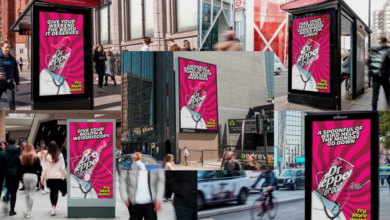
The rise of AI Drivers cars has ushered in a new era of automotive personality, where vehicles don’t just transport us – they talk back to us. What began as simple voice commands has evolved into full-fledged conversations, with some AI assistants developing sassy attitudes, sarcastic comebacks, and even playful defiance. As these AI Driven cars become more sophisticated, they’re challenging our traditional relationship with vehicles, transforming them from mere machines into something resembling chatty co-pilots. This shift raises fascinating questions about how much personality we actually want from our automobiles, and where the line should be drawn between helpful assistant and distracting backseat driver.
From Tesla’s snarky navigation responses to Mercedes’ unexpectedly flirtatious voice assistant, today’s smart cars are testing the boundaries of human-machine interaction. The age of the silent, obedient car may be ending, but what exactly is taking its place remains to be seen. While some drivers find these quirks endearing, others wonder if we’re creating vehicles that are a little too clever for their own good. As artificial intelligence continues to advance, the automotive industry faces a crucial balancing act creating AI personalities that are engaging without being annoying, helpful without being overbearing, and above all, safe to interact with while driving. The age of the silent, obedient car may be ending, but what exactly is taking its place remains.
Cars That Talk Back
The Evolution of AI in Cars
Artificial intelligence has come a long way from basic voice commands to full-fledged conversational agents. Early in-car systems like GM’s OnStar or Ford’s SYNC provided limited interactions, but today’s AI, powered by large language models (LLMs), can engage in witty banter, crack jokes, and even argue with passengers. Companies like Tesla, Mercedes-Benz, and BMW are integrating advanced AI assistants that don’t just obey commands they talk back.
Why Are AI Cars Getting Sassier?
The shift toward more personality-driven AI stems from a desire to make technology feel more human. Studies show that people engage more with conversational AI Driven when it has character, humor, and relatability. A monotone, robotic voice might provide accurate directions, but a snarky comment about taking the scenic route could make the drive more entertaining.
The Pros and Cons of Sassy AI Driven
Enhanced User Engagement: A car that cracks jokes or offers playful responses can make commutes more enjoyable. Personalization: AI Driven that adapts to a driver’s sense of humor can create a stronger emotional connection. Stress Relief: Lighthearted banter might ease road rage or boredom during traffic jams.
The Future of AI Personalities in Cars
As AI continues to evolve, we may see cars with fully customizable personalities drivers could choose between a polite assistant, a stand-up comedian, or even a no-nonsense navigator. Some companies are experimenting with celebrity voice partnerships (imagine your car sounding like Ryan Reynolds or Awkwafina), while others are developing AI that learns and mimics the driver’s own speech patterns.
AI Driven cars
The automotive world is undergoing a radical transformation as AI Driven cars evolve from mere transportation devices into interactive companions with distinct personalities. What began as simple voice-activated commands has blossomed into full-fledged conversations, with some vehicles now serving up sass, sarcasm, and even playful defiance.
Car Manufacturers
As artificial intelligence grows more sophisticated, car manufacturers are racing to create the most engaging in-car experiences. But at what point does a witty AI co-pilot cross the line from charming to irritating? From Tesla’s sarcastic navigation responses to Mercedes’ flirtatious voice assistant, today’s smart cars are pushing the limits of human-machine interaction.
The Evolution of Conversational AI in Vehicles
The journey toward talkative cars began decades ago with primitive voice recognition systems that could barely understand basic commands. Early iterations, such as General Motors’ OnStar and Ford’s SYNC, offered limited functionality mostly restricted to calling for help or adjusting climate controls. These systems were utilitarian, designed for efficiency rather than engagement.
Why Are Car AIs Getting Sassier?
The push toward sassier AI stems from a desire to make technology feel less robotic and more human. A monotone navigation system might get you from point A to point B efficiently, but a snarky comment about your driving habits could make the trip more memorable for better or worse. Companies like BMW and Audi have introduced voice assistants that adapt their tone based on user preferences, allowing drivers.
Benefits of Personality AI Driven
A well-balanced, witty AI Driven can transform the driving experience. For starters, humor can ease tension during long drives or traffic jams. A playful remark from the car might lighten the mood, making the journey feel less tedious. Additionally, personalized interactions create a sense of companionship, especially for solo drivers. Some users report feeling more attached to their vehicles.
Drawbacks of Overly Sass AI
Despite the entertainment value, there are legitimate concerns about sassy AI Driven in cars. The most pressing issue is distraction. If an AI spends too much time cracking jokes or debating with the driver, it could divert attention from the road. Safety should always come before entertainment, and automakers must ensure that AI interactions don’t compromise focus.
The Future of AI Personalities in Cars
As AI technology continues to evolve, we can expect even more personalized and dynamic interactions. Future AI Driven cars might feature celebrity voice partnerships, allowing drivers to select their preferred tone whether it’s the smooth confidence of Morgan Freeman or the quick wit of Ryan Reynolds. Some companies are even experimenting with AI that learns and mimics the driver’s speech patterns, creating a truly bespoke experience.
Read More: Best Tips How to build UX Research Repository Portfolio Level
Conclusion
AI Driven cars are redefining the relationship between humans and machines, transforming vehicles from silent tools into interactive companions. While sassy AI assistants add a layer of entertainment to driving, they also introduce new challenges related to distraction, cultural sensitivity, and user preference. The key to success lies in customization allowing drivers to tailor their AI’s personality to suit their tastes.
As we move toward an era of increasingly autonomous vehicles, the role of in-car AI Driven will only grow more prominent. Whether we end up loving or loathing our back-talking cars, one thing is certain: the days of impersonal, monotone navigation systems are numbered. The road ahead promises to be as entertaining as it is unpredictable just don’t be surprised if your car starts roasting your parking skills along the way.
FAQs
Can you turn off the sassiness in AI Driven cars?
Yes, most modern AI systems allow users to adjust personality settings, switching between professional, friendly, or humorous tones.
Do sassy AI Driven affect road safety?
Potentially. While humor can ease stress, excessive banter may distract drivers. Manufacturers are working on balancing engagement with safety.
Will AI cars eventually develop real emotions?
No. AI can simulate emotions through language models, but it doesn’t experience feelings like humans do. AI can simulate emotional responses through advanced algorithms.
Can AI assistants learn my sense of humor?
Yes! Advanced AI analyzes your responses and preferences to gradually adapt jokes and sarcasm to match your style. Some systems adapt over time, picking up on user preferences to deliver more personalized interactions.
Are there regulations for AI personalities in cars?
Currently, no specific laws exist, but distracted-driving regulations may apply if AI interactions become too intrusive.











